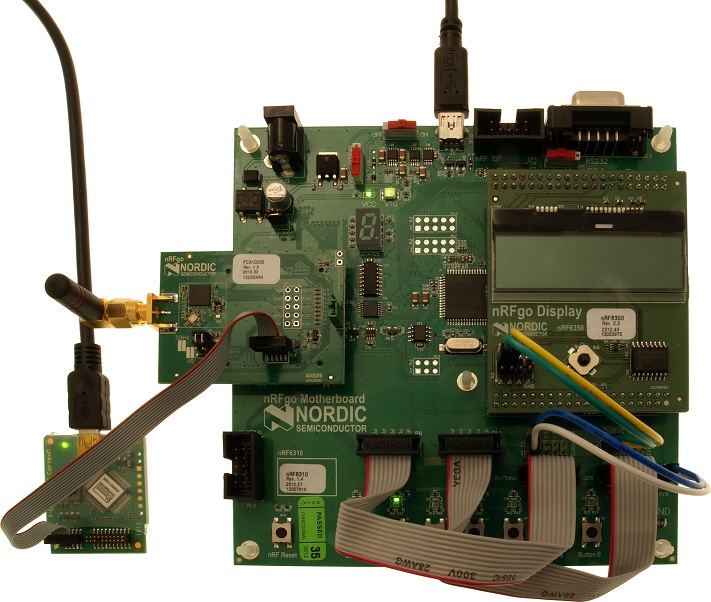 |
nRF51 SDK
|
 |
nRF51 SDK
|
RAM Retention Example Application main file. More...
Macros | |
| #define | RAM_MEMORY_TEST_ADDRESS (0x20002000UL) |
| #define | RAM_MEMORY_TEST_WORD (0xFEEDBEEFUL) |
| #define | RESET_MEMORY_TEST_BYTE (0x0DUL) |
| #define | MAX_TEST_ITERATIONS (1) |
| #define | SUCCESS_OUTPUT_VALUE (0xAB) |
| #define | PIN_GPIO_WAKEUP (7) |
Functions | |
| void | HardFault_Handler () |
| Function for handling HardFaults. In case something went wrong or System OFF did not work and reached the end of the program. | |
| static void | gpio_config (void) |
| Function for configuring I/O pins 8 - 16 as output, and pin 7 as wake up source. | |
| static void | display_failure (void) |
| Function for indicating failure by turning on all LEDs. | |
| int | main (void) |
| Function for application main entry. | |
This file contains the source code for a sample application using RAM retention.

| #define RAM_MEMORY_TEST_ADDRESS (0x20002000UL) |
Address in RAM where test word (RAM_MEMORY_TEST_WORD) is written before System OFF and checked after System RESET.
| #define RAM_MEMORY_TEST_WORD (0xFEEDBEEFUL) |
Test word that is written to RAM address RAM_MEMORY_TEST_ADDRESS.
| #define RESET_MEMORY_TEST_BYTE (0x0DUL) |
Known sequence written to a special register to check if this wake up is from System OFF.
| #define MAX_TEST_ITERATIONS (1) |
Maximum number of iterations this example will run.
| #define SUCCESS_OUTPUT_VALUE (0xAB) |
If RAM retention is tested for MAX_TEST_ITERATIONS, this value will be given as output.
| #define PIN_GPIO_WAKEUP (7) |
GPIO pin configured to wake up system from System OFF on falling edge. It can be connected to a button which is high when not pressed.